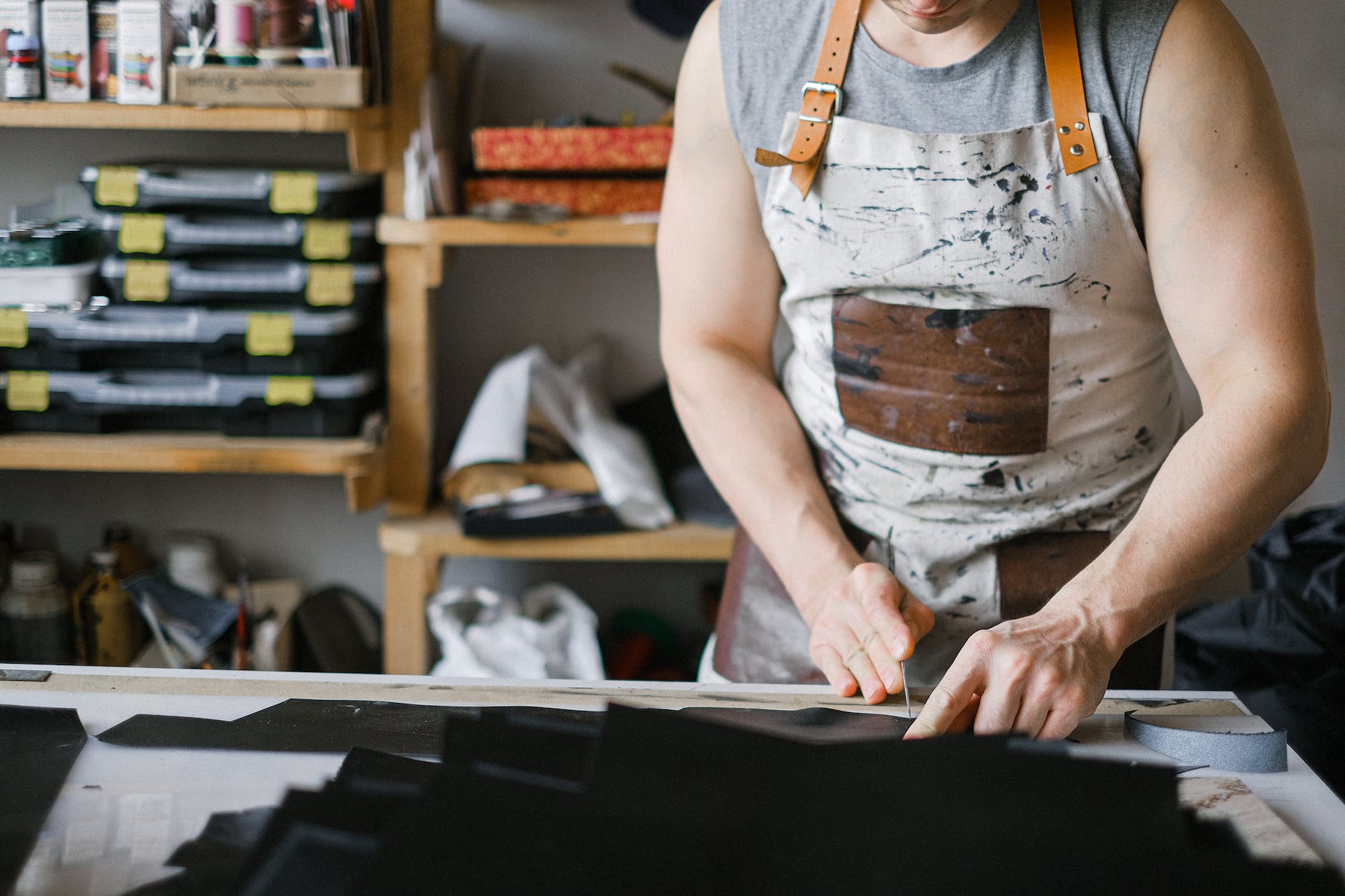From Hide to Handcrafted: The Leatherworking Process Unraveled
Raw Material Sourcing and Selection
Finished leather goods trace back to two initial sources – hide and skins. Hides come from larger animals like cattle, bison and elk. Skins derive from smaller species like deer, goat and pig. Quality and properties vary.
Hides arrive at tanneries salted for preservation. Workers sort them into grade categories based on criteria like scar marks, defects, and flea bites. Only the top grades proceed for flawless results.
Discerning leatherworkers examine textures, thicknesses, stretch, and natural markings in selecting hides for specific uses and techniques. The raw canvases set the course for finished creations.
Pre-Tanning Preparation Steps
Before tanning, hides undergo several preparatory steps to remove hair, fat, and proteins for optimal treatments.
First workers rehydrate dried hides by soaking them in water to restore flexibility. Then layers get temporarily preserved through salting and storing at cold temperatures.
When ready for processing, hides move through beamhouse steps. Workers remove skins from storage and trimming off ragged edges from collection. Hair gets scraped off through liming. Fleshing machines clear away any leftover tissue, fat, or muscle.
Finally pickled hides get spread over beams where workers adjust them to uniform thicknesses using blade tools. This delicate job impacts the final leather quality.
The Science and Art of Tanning Raw Hides
Tanning chemically stabilizes proteins in hide collagen so it resists decaying into rawhide. Many methods exist using botanicals, oils, chromium, aluminum or other agents.
Some methods like bark tanning involve submerging hides for months in solutions of tannins. Oils in chamois tanning penetrate skin completely in just two days. Modern methods optimize efficiency.
Skilled tanners across history developed local techniques suited to available materials from tree bark to eggs, exotics like shark oil or even bird poop. Their recipes transformed raw skins into stable, worked leather.
The alchemy continues today both in artisanal tanneries and industrial scale operations aimed at consistency and quality suited to leather’s end uses.
Post-Tanning Finishing Steps
After tanning, hides undergo various finishing steps to enhance properties like surface sheen, softness, and color consistency.
First tanned hides get shaved to achieve precise uniform thicknesses. Then they are dyed through and through via drum dying for flawless color saturation. Fats get added back to improve flexibility.
Further finishing steps depend on the leather type. Grain leather for shoes and bags gets embossed for uniform prints and protective top coats. Suede gets napped for its signature velvety texture. Exotics get gloss polishes.
Quality control inspectors examine every step’s results. Only flawless leather advances since defects cannot get reversed after finishing. Careful processes culminate in durable beauty.
Cutting and Sewing Leather into Components
At leatherworking studios, the first hands-on steps involve cutting patterns precisely from leather hides using specialized blades changed frequently for flawless cuts.
After cutting, the pieces then get assembled into functional constructions using rivets, glue, and hand-sewing with waxed linen thread and saddler’s needles that won’t tear through leather’s density.
Edge finishing steps add polish through beveling, burnishing, and painting exposed leather edges. These seals prevent damage from handling, improving durability. Decorative accents get attached using snaps and hardware.
Finally, the constructed leather pieces undergo finishing and polishing using oils, waxes, gums, and acrylics to enrich color, add sheen, and protect surfaces. Careful processes yield heirloom quality goods.
Design, Tooling, and Decoration
Leatherworking elevates into art through detailed hand tooling that transforms plain hides into richly embellished pieces exhibiting mastery of technique.
Using specialized implements, leatherworkers engrave, indent, carve, skive, crease, emboss, and incise surfaces to create stunning textures and effects. Precisely tooled patterns distinguish quality.
From geometric template impressions to freehand floral lifework, skills develop over years of practice. Yet always the leather’s inherent temper guides rather than gets forced. Intuition traces ancient patterns passed down through the hands.
These motifs add beauty and meaning unique to leathercraft. Heat, moisture and time’s passage only intensify the refined elegance of such adornments when made with patience and care.
The journey from raw hides to unique hand-tooled leather goods bridges millennia of skill passed down from leather artisans to current practitioners. At its core remains a profound reverence for the animals providing durable skin and for the craftspeople who transform it into diverse artworks and useful items through meticulous honed processes. Waste gets minimized as all scraps find their place. Each finished piece then goes on to gather memory and character from its life out in the world – a never-ending story that begins with selection of an ideal hide and ends with the steady hands capable of cultivating its promise.
